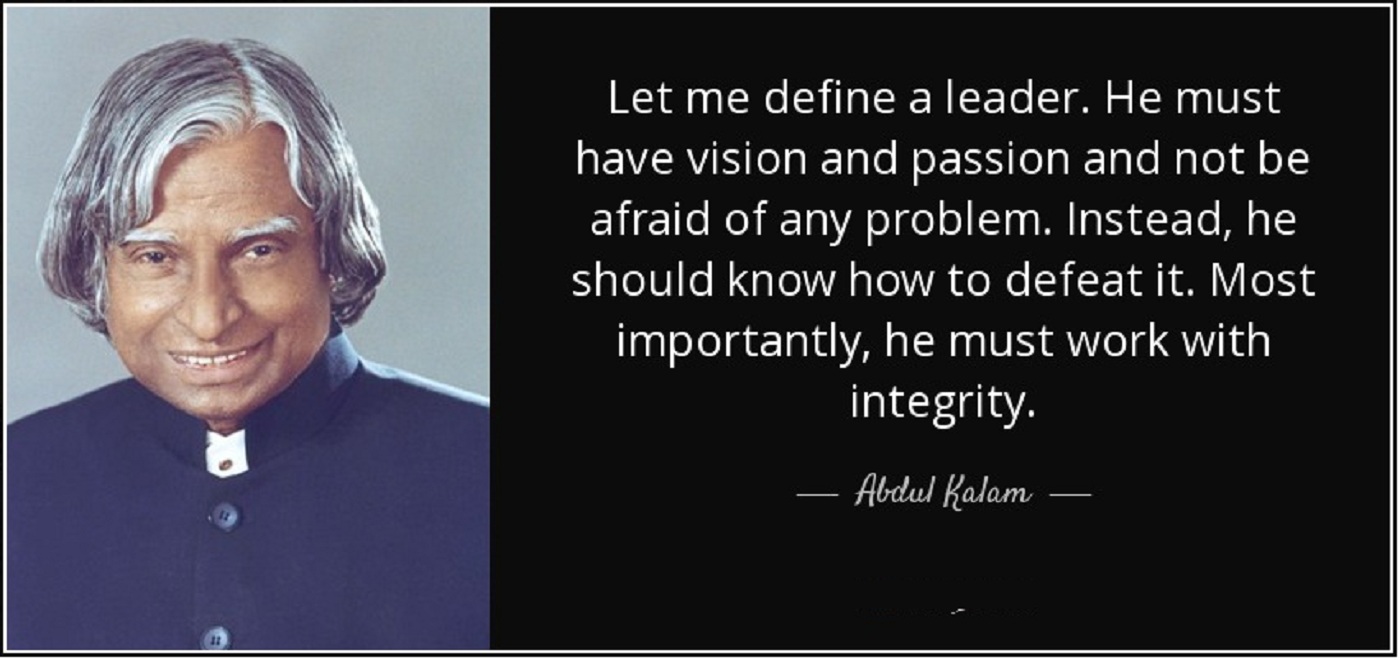


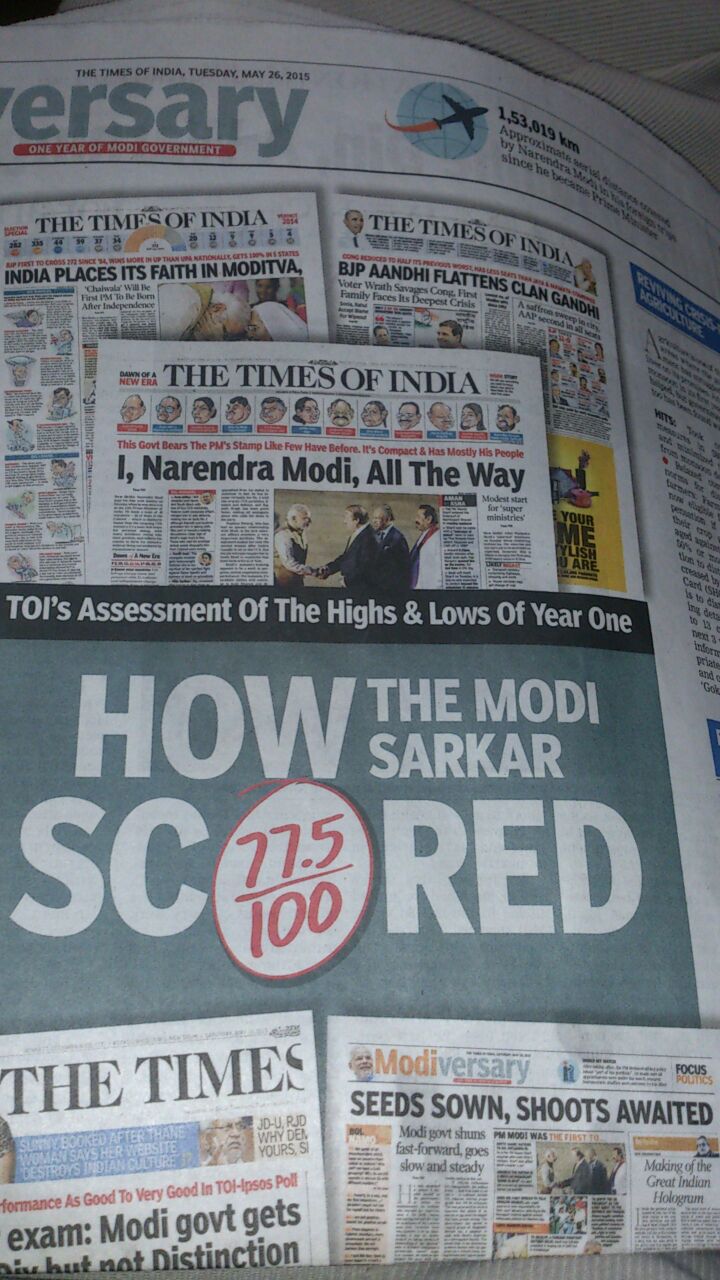
1. Restoring leadership, governance and work culture
Rating: 9
One key campaign promise was that Modi's government would provide decisive leadership. And, even his harshest critics won't deny that Modi has stamped his authority over this government. The PMO is unquestionably the sole power centre. Ministries have ceased to be the autonomous republics they morphed into under Manmohan Singh. Modi's been accused of centralizing powers, but his monitoring is arguably one big reason behind the absence of corruption charges.
The centralized structure addresses concerns stemming from weak bench strength, and resulted in ministers improving performance. The team looks more cohesive now.
An early step this government took was to signal a new work culture to the bureaucracy, tracking attendance, insisting babus report for work on time. At the same time, Modi showed bureaucrats they could be more empowered than in the past, encouraging them to interact across ministries to remove roadblocks and come to him bypassing their ministers if they disagreed with the mantri.
Modi's tenure so far has seen the appointments process in babudom and the public sector significantly cleaner. Chatter about pay-offs for transfers or postings, once the norm in corridors of power, now appears a thing of the past.
Contrary to fears, the government has refrained from using agencies like the CBI for political gains. It has not blindly reversed UPA policies, including some that have been controversial. The Indo-US nuclear deal and Aadhaar illustrate this. Both haven't just been continued, but expanded.
On the negative side, key appointments like the CVC and CIC are delayed and the government has dragged its feet over constitution of the Lokpal search committee. It has appeared overly sensitive to criticism in its dealings with NGOs. The PM's initial silence on pronouncements by Sangh Parivar hotheads and some party MPs raised questions about his leadership, but he seems to have reined them in.
2. Putting the economy back on the growth path
Rating: 7.5
Having inherited an economy which had slowed significantly and one in which investor confidence had plunged due to policy paralysis and uncertainty, the Modi government's priorities were to restore the growth momentum and provide stability. Politically, the big economic challenge was to rein in inflation. It has had varying measures of success. While there may be a debate on the growth numbers, there's no dispute that the situation has improved over the last year.
Inflation is no longer the problem it was and decision making isn't as unpredictable as it had become towards the end of UPA's tenure. The speed of decision making has dramatically improved.
The intent to kickstart the economy is evident in the determination with which the government has pursued legislation it believes is crucial for the economy, including the land acquisition ordinance and changes in labour laws. The insurance Bill and the mining Bill are part of this drive. Changes in the FDI policy, including pushing for more foreign investments in defence and railways, indicate the strategy to ensure Make in India is more than a slogan. The home ministry's efforts to rationalize security clearances for FDI proposals, including limiting the timeframe for decisions to 3 months and clearly defining go and no-go areas are part of this initiative.
The government has taken steps to make it easier to do business, for both domestic and foreign investors. Among these is the launch of an online system for green clearances and other approvals, expected to go online as part of a plan to create a single-window mechanism. Efforts to make the proposed GST a reality from next April and assurances of a tax payer friendly regime seek to meet this objective.
On the flip side, as the FM has acknowledged, domestic investment remains a matter of concern. If investments fail to revive, not only does it threaten the success of Make in India, it means job creation - a major UPA failure - will be difficult. With the external situation - in particular oil prices - likely to turn more adverse, the government can't afford to drop its guard.
3. Reviving crisis-ridden agriculture
Rating: 5.5
Agriculture is one of the few areas where the government has struggled to deliver on its promises. An erratic monsoon in its first year hasn't helped, but government policy too has been found wanting.
Hits: Took contingency measures in 580 districts and minimized the damage from monsoon deficit of 2014
Relaxed compensation norms for disaster-hit farmers: Farmers are now eligible for compensation if 33% of their crop gets damaged against the earlier 50% or more. Compensation to distressed farmers increased by 50%
Soil Health Card (SHC) launched. Target is to distribute cards, carrying details of soil nutrition, to 13 crore farmers in the next 3 years so they can take informed decisions on appropriate dosages of fertilizers and other inputs
Launch of 'Gokul Mission' (an intervention to improve milk yields) Cleared restricted field trials of genetically modified (GM) food crops missteps: Ambitious rural irrigation scheme to provide assured water supply to farms has failed to take off so far. Nothing much happened beyond allocation of funds, the Centre hasn't yet broken states' inertia Income-linked farm insurance scheme remains a dream
Systemic reforms or major structural changes still elude farm sector. The government has taken steps to stop illegal diversion of subsidized urea and revive closed plants. But it has still not bit the bullet of raising urea prices, which could have reduced indiscriminate use of urea.
No word on reworking FCI to increase efficiency, much-questioned MSP-based system still in vogue.
4. Focusing on health, education and other social indicators
Rating: 6.5
The government has faced flak for cutting outlays on social sector heads like education and health, though it says states are expected to make up through the additional funds they'll receive under the finance commission recommendations.
It's also been accused of cutting funds for 'pro-poor' schemes like MNREGS, but argues that outlays are higher than before and all it has done is insist on states providing utilization certificates before further funds are released.
Contrary to what many feared, there's been no attempt to foist the 'cultural agenda' of the Sangh. Fears of the curriculum being re-engineered to push Hindutva haven't come true, at least not yet. There've been cases of appointments - in the Censor Board or the council for historical research - being influenced by ideological considerations, but these have been par for the course in previous regimes.
Education
Hits: Scrapping of ill-conceived four-year undergrad programme in DU Work on a new edu policy with feedback from each village New appointment policy for central varsity VCs
Global Initiative of Academic Network, under which academics, entrepreneurs, experts can come from all over the world and teach in India.
Missteps: Not accepting resignation of IIT-D director R K Shevgaonkar for nearly 5 months Interfering in appointment of directors for IIT-Patna, Ropar and Bhubaneswar
Resignation of Anil Kakodkar from IIT Council
Backlog of appointment of Central varsity VCs remains New NCERT director and CBSE chairperson not appointed No decision on committee's suggestion that UGC be scrapped and replaced by a new body.
Controversy over Sanskrit vs German as third language in Kendriya Vidyalayas.
Health
Hits: Mission Indradhanush launched to expand full immunization coverage from 65% in 2013 to at least 90% in 5 years Japanese encephalitis programme to cover most of UP
Drug prices down in one year.
Missteps: Free medicines and diagnostics (under National Health Assurance Mission) yet to take off Promise of adding 3 new vaccines to universal immunisation programme stuck Larger pictorial warnings on tobacco products deferred.
5. On foreign policy & burnishing India's image globally
Rating: 9
Modi immediately immersed himself - and hence Indian policy - in the neighbourhood. He started by inviting SAARC leaders to his swearing-in and has since toured Bhutan, Nepal and Lanka and most recently reset ties with Bangladesh by pushing through the land boundary agreement that had proved a thorn in Indo-Bangla relations. In each case, investment and trade are part of the enhanced engagement.
The jury is still out on Modi's Pakistan policy. Despite what many saw as use of disproportionate force on border transgressions, and calling off talks because of Hurriyat leaders meeting the Pakistan high commissioner, the government has adopted a policy of benign neglect. What it has successfully done is to manage expectations of a breakthrough and prevent the Pakistan issue from dominating foreign policy.
Beyond SAARC, Modi's visits to industrialized countries, including France, Japan, China and the US have conveyed a sense of purpose and of willingness to go beyond historical constraints. He has used NRIs to great effect in his outreach programme. Most importantly, the PM has tried to link foreign policy with his domestic agenda - development of India's economy and its national power, hard and soft. The latter agenda has been well served by India's rescue efforts in Nepal and in civil war-hit Yemen.
6. Re-energizing defence
Rating: 8
The defence ministry was among the ones most affected by lack of decision-making in the UPA's tenure, perhaps to avoid adding to the long list of controversies. That has changed radically under the new dispensation.
Hits: Faster decision-making in modernization projects. Initial approvals accorded to proposals worth Rs 1 lakh crore, revival of long-pending critical projects
Decision to outright buy 36 French Rafale fighters, scrapping of the deadlocked $20 billion MMRCA (medium multi-role combat aircraft) project for 126 such fighters.
Missteps: Slow follow-through of decisions on modernization projects
DRDO chief sacked in January, replacement yet to be found Slow approval process for much-promised one rank, one pension policy for ex-servicemen
New defence procurement policy yet to be finalized
Make in India remains a slogan with no clear policy to encourage private sector to enter defence production in a big way
No radical systemic change to overhaul functioning of DRDO & its 50 labs, five defence PSUs, four shipyards and 39 ordnance factories
No chief of defence staff post created to promote integration among three services, prioritize procurements and make concrete long-term strategic plans
No forward movement on National War Memorial or Indian National Defence University.
7. Curbing corruption/cronyism & black money
Rating: 9
One comment repeatedly heard from businessmen about this government is that the culture of getting clearances by cosying up to ministers has come to an end.
This is conceded by industrialists otherwise critical of the government. Little wonder that the government is making much of the fact that no scam has surfaced in its tenure.
Apart from this check on corruption at the highest levels, there's an attempt to introduce systemic change that curbs graft at lower levels. Pilferage from subsidies has been sought to be controlled through directly transferring cooking gas subsidy to beneficiary accounts. The push for extensive Aadhaar use is aimed at plugging leakages.
Among the first steps of the government was to set up an SIT on black money.
While no money has yet been recovered, there's been a show of intent in the form of new, stringent laws on black money.
The telecom spectrum and coal block auctions have brought transparency to the allocation of natural resources, even if this was mandated by the Supreme Court.
Next up are mining leases and coal supply linkages.
8. Boosting infrastructure
Rating: 7
Railways: The Modi government sees the Railways as one of the keys to reviving the economy. It has promised to spend Rs 1.5 lakh core over five years to put the Railways back on track. It is focusing on leveraging private investments from within and outside the country towards this end. It has made a shift from the past in shunning announcements of new trains and lines to focus on accelerating remunerative projects pending for years. However, the efforts are yet to show results and tough decisions such as restructuring the Railway Board have not been taken.
Roads: Public spending on highways has been enhanced, but an ambitious target of building 30 km of roads every day means that government funding alone cannot meet the need and it will ultimately have to attract private investment too.
Towards this end, some steps have been taken to enhance liquidity for developers to take up new projects. Viable stalled private sector projects are also being revived through infusion of public funds, while unviable ones have been scrapped.
Smart Cities: Contrary to popular perception that 100 smart cities means entire Delhi, Mumbai, or Chennai will become smart cities, the plan is only to transform a few blocks in such cities.
Oil & Gas: Helped by lower international prices, the government moved to deregulate diesel prices, aiding the return of private players. The new gas pricing formula restricted the increase from the level proposed by UPA, but made several discoveries unviable and left industry unenthused. The government has put in place an arm's length policy towards business leaders, a sea change from the past.
Power: There is an effort to revive idle gas-fired plants through a novel subsidy scheme and also a scheme to allow state utilities to exchange old plants with new ones. Despite claims of record generation and an all-time low energy deficit of 3.6%, the structural problems of the sector remain. There's no end to the funding woes of power projects or the poor financial health of state utilities, though the government insists it will be able to provide 24x7 power supply by 2019-20.
9. Striving for wider financial inclusion and social security
Rating: 8
Among the most successful government initiatives has been the Jan Dhan Yojana, which has ensured that virtually every household has a bank account. Many of the accounts now have zero balance, but with subsidies increasingly being routed straight to beneficiary accounts, that should change. Already, about Rs 15,000 crore has been deposited in these new accounts.
The government has launched schemes for life and accident insurance for nominal premiums and a pension plan that assures 8.5% return on contributions. Within a fortnight, 7.5 crore people joined the schemes. The plan is to have a healthcare scheme for senior citizens using money left unclaimed in PPF accounts.
On the flip side, the attempt to reform labour laws to bring them in line with the needs of a market-oriented economy has met resistance from trade unions, including the BJP-affiliated BMS.
10. Fostering a more equitable relationship with states
Rating: 8
Modi avers that he believes in "cooperative federalism" and will do what it takes to make states equal partners with the Centre in his development agenda.
Among the first steps towards reworking the structure was the scrapping of the Planning Commission, ostensibly to give states relief from a domineering Centre engaging in micro-management through the Plan panel approving state plans. Another significant development was the higher devolution of the Centre's tax funds to the states based on the 14th Finance Commission's recommendations.
While there's some dispute about whether and how much states have gained in monetary terms since some centrally sponsored schemes have been transferred to them and others have seen Central funds being slashed, there's no dispute that they've gained a greater say in how they spend their money. Larger resources for the states by way of the proceeds of auctions of minerals within their jurisdictions have given them greater financial muscle. The Centre has been prompt in extending assistance to states during crises, like crop failure, floods or earthquake, drawing appreciation even from rivals like Nitish Kumar.
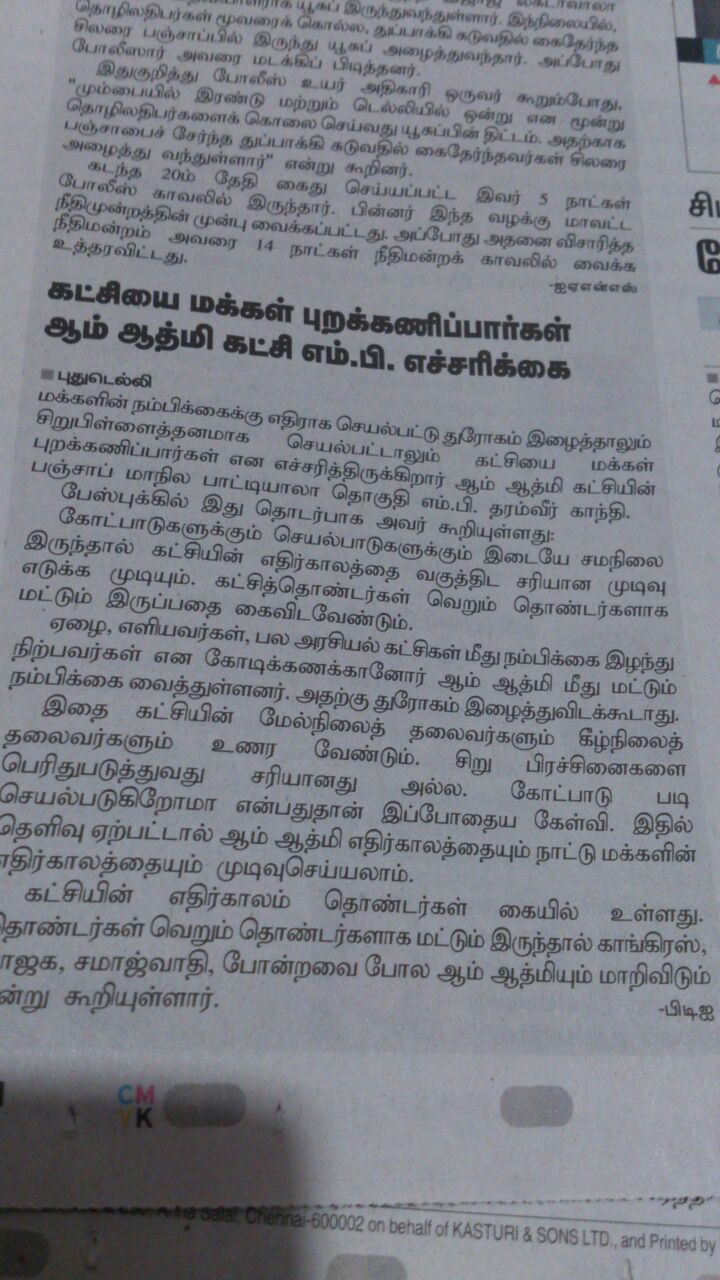
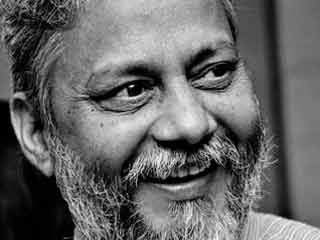
Rajendra Singh is considered by many people to be the "water man of India" and he has now been awarded this year's annual Stockholm Water Prize. The Tarun Bharat Sangh organization, of which Singh is a part, has worked to save rivers around the subcontinent. Traditional rainwater collection methods are among the techniques being used by the group in order to rescue waterways threatened by a variety of dangers.
Singh was an ayurvedic doctor when when started on his crusade to save rivers and other bodies of water around India. He joined Tarun Bharat Sangh in 1981, and three years later, the entire board of the organization resigned after being grilled by Singh on their activities. In order to support the mission of the group, the activist sold his household goods.
Five rivers in Rajasthan were saved by Singh, along with help from villagers who helped the activist build dams and 8,600 rainwater storage tanks known as johads. "Through the Indian wisdom of rainwater harvesting, we have made helpless, abandoned, destitute and impoverished villages prosperous and healthy again," Singh said.
Another success story is found in the Arvari River, which had not run for six decades. In 1986, Singh constructed a storage tank on the river, in order to restore the waterway to its original condition. Water flow was restored through the construction of 375 check dams, and was running regularly by 1995.
The Loharinag Pala hydropower project and other planned construction on water which could harm the environment were also stopped after being targeted by Singh. Singh led a walkathon through the city of Mumbai in 2009, in an effort to bring attention to the problems of water supply in the Mithi River. The traditional rainwater collection methods championed by Singh fell out of widespread use during the era when India was ruled by England. However, they have proven effective at bring waterways back to pristene conditions under the guidance of Singh.The World Bank and other large institutions have come out opposing actions by the activist, claiming that India needs to return to constructing large dams, in order to provide electrical power to homes and businesses. The environmental activist, born in 1959, will receive $150,000 from Carl Gustav, the king of Sweden, on August 26, during World Water Week."Mr Singh is a beacon of hope. He has literally brought villages back to life. We need to take Mr Singh's lessons and actions to heart if we are to achieve sustainable water use in our lifetime," Torgny Holmgren, executive director of the Stockholm International Water Institute (Siwi) said.
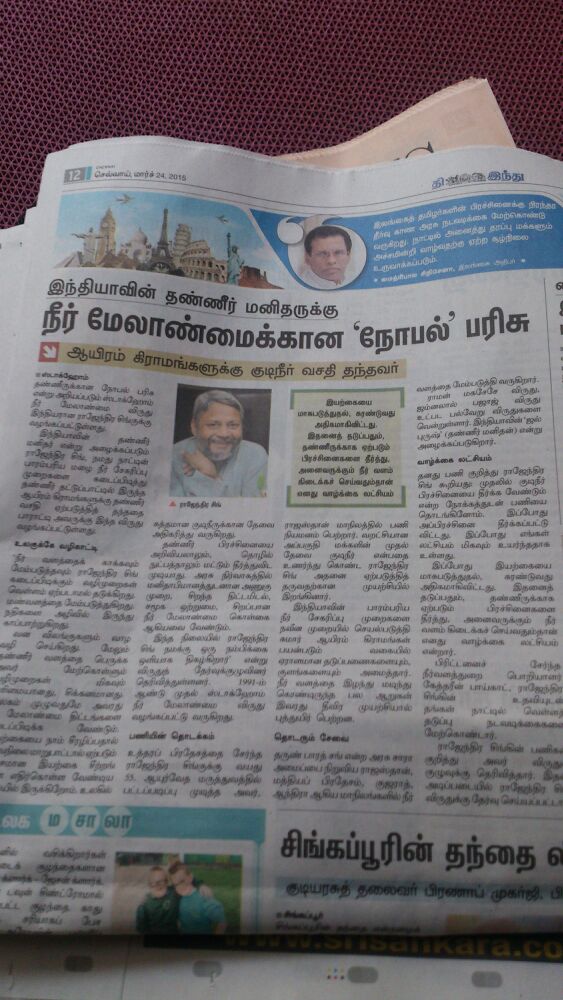
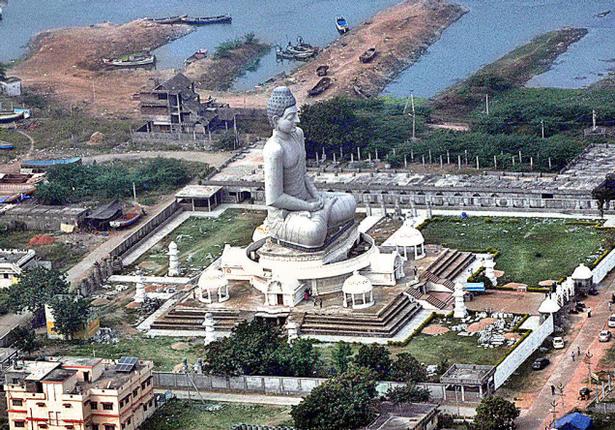
While the government has taken a decision on the move to name the new capital as Amaravati, a formal announcement is likely to be made soon.
The N Chandrababu Naidu government in Andhra Pradesh has initiated the land pooling process and has thus far managed to get consent for 33,000 acres for constructing the proposed new capital city. A Senior State Minister confirmed the proposed move. The master plan for the capital city, being prepared by Singapore-based firms, is likely to be ready by May-June this year and works are poised to commence in the second half of 2015.
The State government seeks to name the new capital city on a small sleepy town known as a tourist spot, about 35 km from Vijayawada, and home to famous temple of Lord Shiva and a Buddhist Stupa. As per historical data, Amaravati and nearby locations including Dharanikota served as capital of Satavahanas and later to other rulers. The region along the Krishna River has been an important destination for Buddhists for the Stupa. The town and the Stupa were in limelight when Dalai Lama conducted a mega event Kalachakra in 2006 and lately now with the AP government seeking to make it part of the proposed capital region.
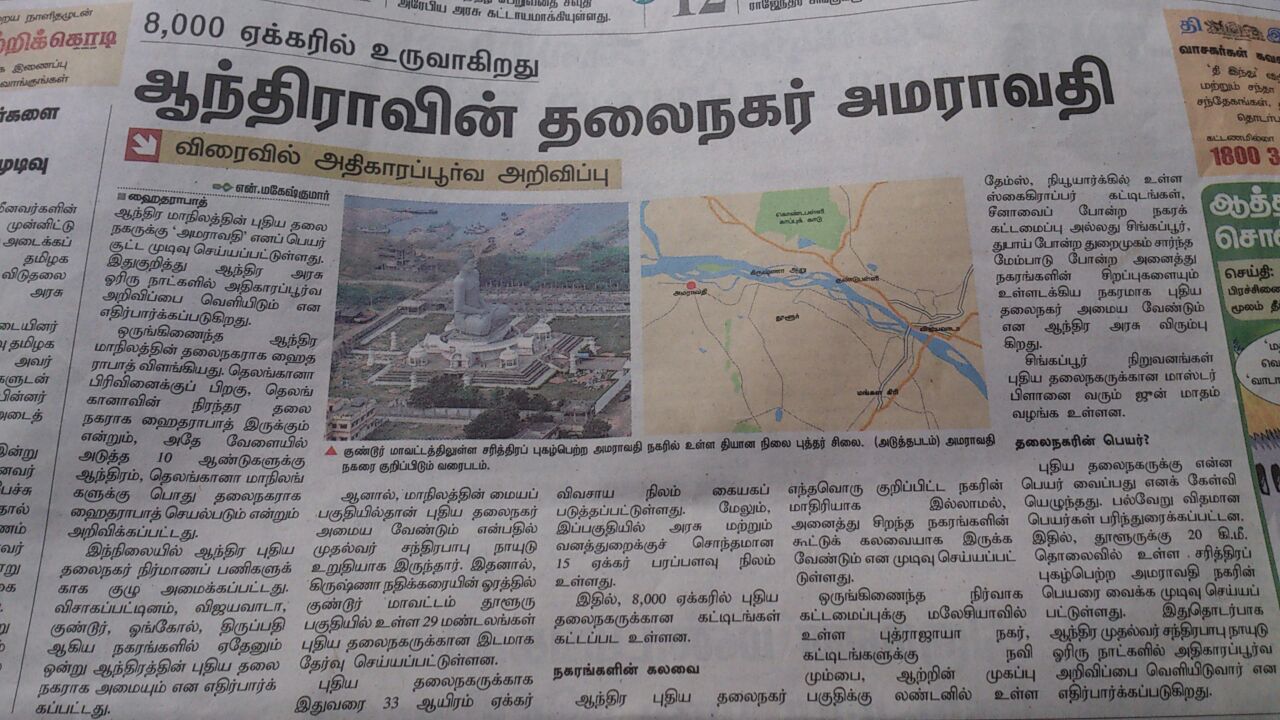
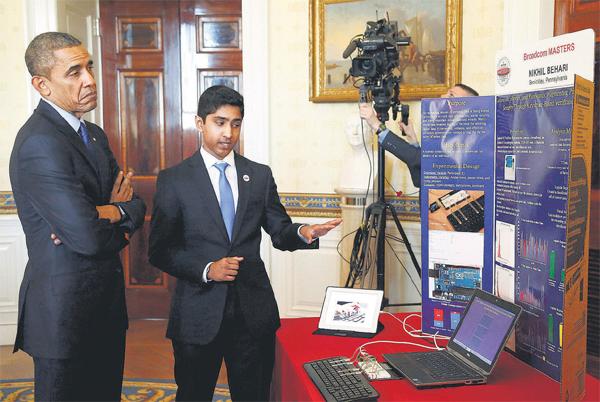
அமெரிக்க அதிபர் இல்லமான வெள்ளை மாளிகையில் நடை பெற்ற அறிவியல் கண் காட்சியில் இந்திய வம்சாவளி மாணவர்களின் கண்டுபிடிப்பு களை அதிபர் பராக் ஒபாமா வியந்து பாராட்டினார்.
அமெரிக்க அதிபர் மாளிகையில் ஆண்டுதோறும் அறிவியல் கண்காட்சி நடத்தப்பட்டு வருகிறது. இந்த ஆண்டு கண்காட்சி அண்மை யில் நடைபெற்றது. இதில் 30 மாகாணங்களைச் சேர்ந்த சுமார் 100 மாணவர்கள் தங்கள் கண்டுபிடிப்புகளை காட்சிக்கு வைத்திருந்தனர்.
அவற்றில் மிகச் சிறந்த 12 கண்டுபிடிப்புகளை அதிபர் ஒபாமா நேரில் பார்வையிட்டார். அதில் பெரும்பாலானவர்கள் இந்திய வம்சாவளியைச் சேர்ந்த இளம் விஞ்ஞானிகள் ஆவர்.
அரிசோனாவின் ஸ்காட்டேல் பகுதியைச் சேர்ந்தவர் அன்விதா குப்தா (17). இவர் உலகை அச் சுறுத்தும் எபோலா வைரஸ் காய்ச்ச லுக்கு புதிய மருந்துகளை கண்டு பிடிப்பதற்கான மூலக்கூறுகளை பட்டியலிட்டிருந்தார். இதனை அதிபர் ஒபாமா வெகுவாகப் பாராட்டினார்.
கண்காட்சியில் அன்விதாவை நேரில் சந்தித்துப் பேசிய அவர், இந்த இளம் வயதில் இதுபோன்ற ஆராய்ச்சியில் ஈடுபட்டு சாதனை புரிவது அரிது, இதை என்னால் நம்ப முடியவில்லை என்று தெரிவித்தார்.
இளம் சாப்ட்வேர் நிபுணரான திரிஷா பிரபுவின் புதிய மென் பொருள் கண்டுபிடிப்பும் கண் காட்சியில் இடம்பெற்றது. அநா கரிகமான இணையதள தகவல்கள் குறித்து எச்சரிக்கை செய்யும் வகையில் இந்த மென்பொருள் உருவாக்கப்பட்டுள்ளது.
மற்றொரு இந்திய வம்சாவளி மாணவரான நிகில் தோஷியின் கண்டுபிடிப்பான கரியமில வாயுவில் இயங்கும் பேட்டரி, கண்காட்சியில் அனைவரின் பார்வையும் கவர்ந்தது.
மேலும் மாணவர் நிகில் பெகாரி யின் கணினிகளுக்கான பயோ மெட்ரிக் பாதுகாப்பு முறை மற்றும் ருச்சி பாண்டியாவின் ‘பயாசென் சார்’ ஆகிய கண்டுபிடிப்புகளை அதிபர் ஒபாமா வெகுவாகப் பாராட்டினார்.
அவர் பேசியபோது, இந்த மாணவர்களின் பெற்றோர் இந்தியாவில் இருந்து அமெரிக் காவில் குடியேறியவர்கள் ஆவர், பெற்றோரை போன்றே அவர் களின் பிள்ளைகளும் இப்போது தங்களின் திறமையை வெளிப் படுத்துகிறார்கள். இச்சிறார்கள் ஒருநாள் உலகை மாற்றிக் காட்டு வார்கள். அவர்களுக்கு எனது பாராட்டுகள் என்றார்.
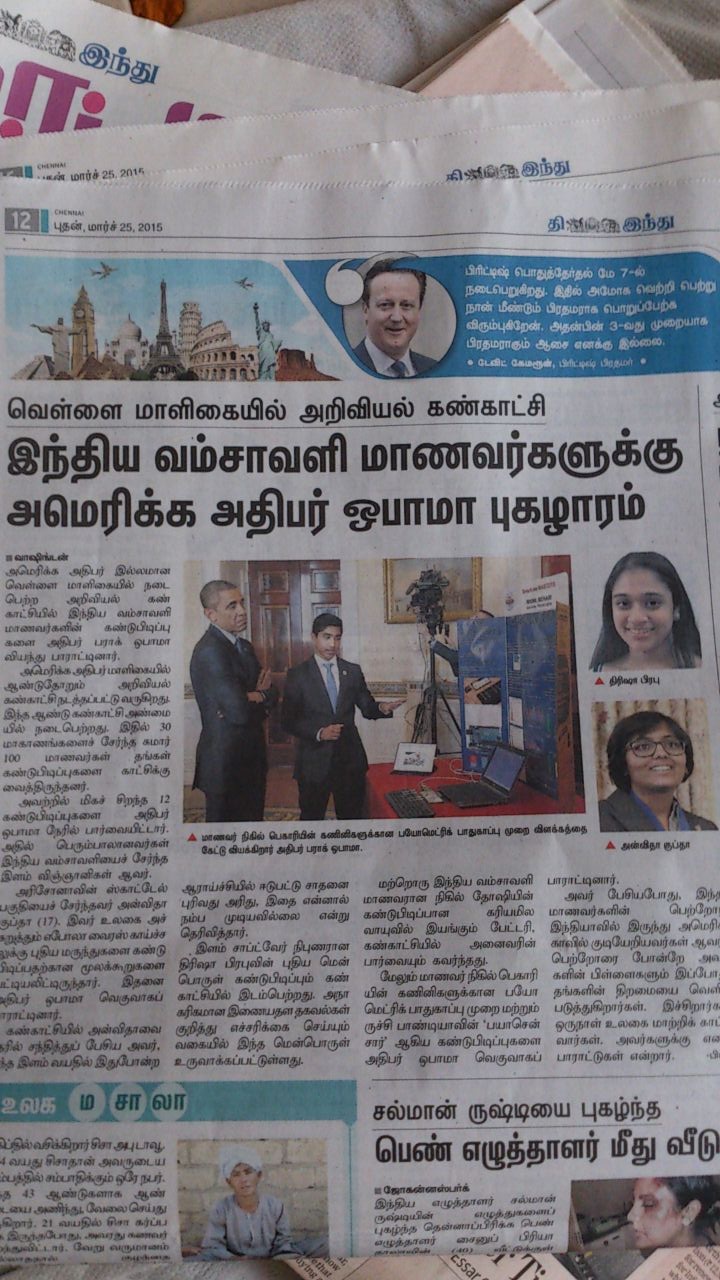
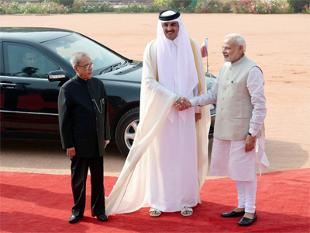
Expressing interest in Modi's 'Made in India' initiative, the 34-year-old Sandhurst-trained Emir, who took over the reins of the world's richest country (by per capita GDP) from his father in 2013, said, "I know that the new government is taking a number of initiatives, especially in business and investment, which is very interesting and encouraging from our point of view. We trust the Indian economy. So we will invest in India."
Through the Qatar Investment Authority, he holds significant stakes in such blue-chip corporations as Harrods, Barclays and Sainsbury; he also owns the famed Paris Saint-Germaine Football Club, and controversially won the right to host the 2022 football World Cup.
Investment and international security will dominate today's talks in New Delhi. Qatar supplies an overwhelming share of India's natural gas needs, but Sheikh Tamim is keen to move the relationship beyond just energy.
He said he wanted to start a security conversation with India. Qatar, which is playing a pivotal role in international affairs as it presides over reconciliation talks between Afghanistan and Pakistan-supported Taliban, finds itself at the intersection of some of the world's biggest security challenges and investment opportunities.
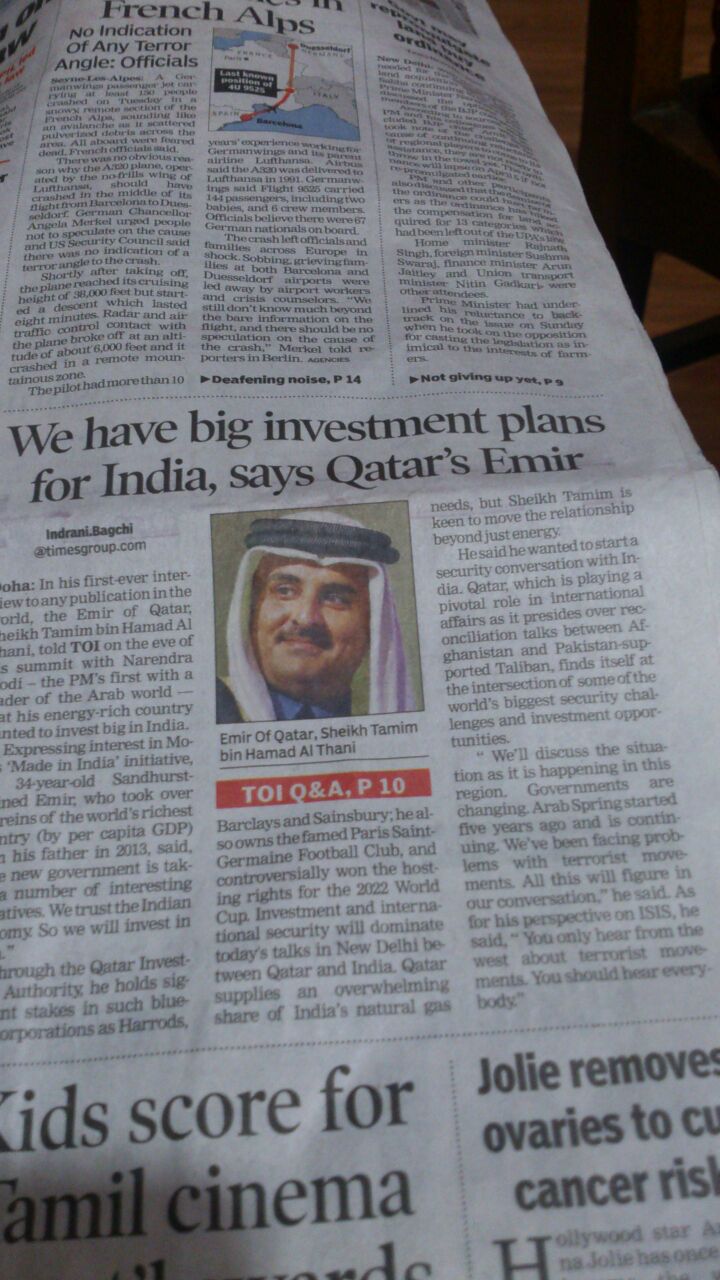

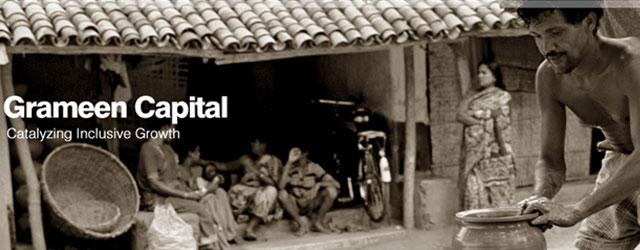
Grameen Capital India, a social impact-focused investment advisory firm, has raised an undisclosed amount in funding from a group of investors, including Ratan Tata, chairman emeritus of Tata Sons, the holding firm of Tata Group, for a new debt investment vehicle.
The investors in the firm's non-banking financial company (NBFC) include Dempo Group chairman Shrinivas Dempo and investment banker Vikram Gandhi besides existing investors, Grameen Foundation and Amit Patni and Arihant Patni (sons of Patni Computer co-founder Gajendra Patni).
The company said it is in advanced discussions with two institutional investors to raise additional equity capital for the NBFC to meet its initial target of raising $10 million. It expects to start lending from the new vehicle in the next quarter.
Royston Braganza, chief executive officer of Grameen Capital India, said, "Traditional sources of debt, in many cases, are neither adequate, affordable nor timely, forcing social enterprises to end up using equity for working capital. We hope that our debt vehicle will help, in a modest manner, attract attention and debt capital to the base of the pyramid."
The initial focus of the NBFC would be on financial inclusion, agriculture, affordable health and affordable education.
Grameen Capital India is an investment advisory services firm targeting impact-focused enterprises through debt and equity funding solutions, credit enhancement and strategic advisory services. It also advises double bottom-line funds on their impact investment programmes in India.
The firm claims it has facilitated more than $160 million of both equity and debt capital for social enterprises.
It was established in 2007 as a joint venture between Grameen Foundation, Citicorp Finance and IFMR Trust.
Ratan Tata, who retired as chairman of Tata Sons in December 2012, has been making small investments in his individual capacity. In the recent past, he has backed several online ventures, including e-commerce marketplace Snapdeal, jewellery e-tailer BlueStone, online furniture store Urban Ladder, healthcare service provider Swasth India, auto classifieds portal CarDekho and most recently backed Paytm parent One97 Communications.
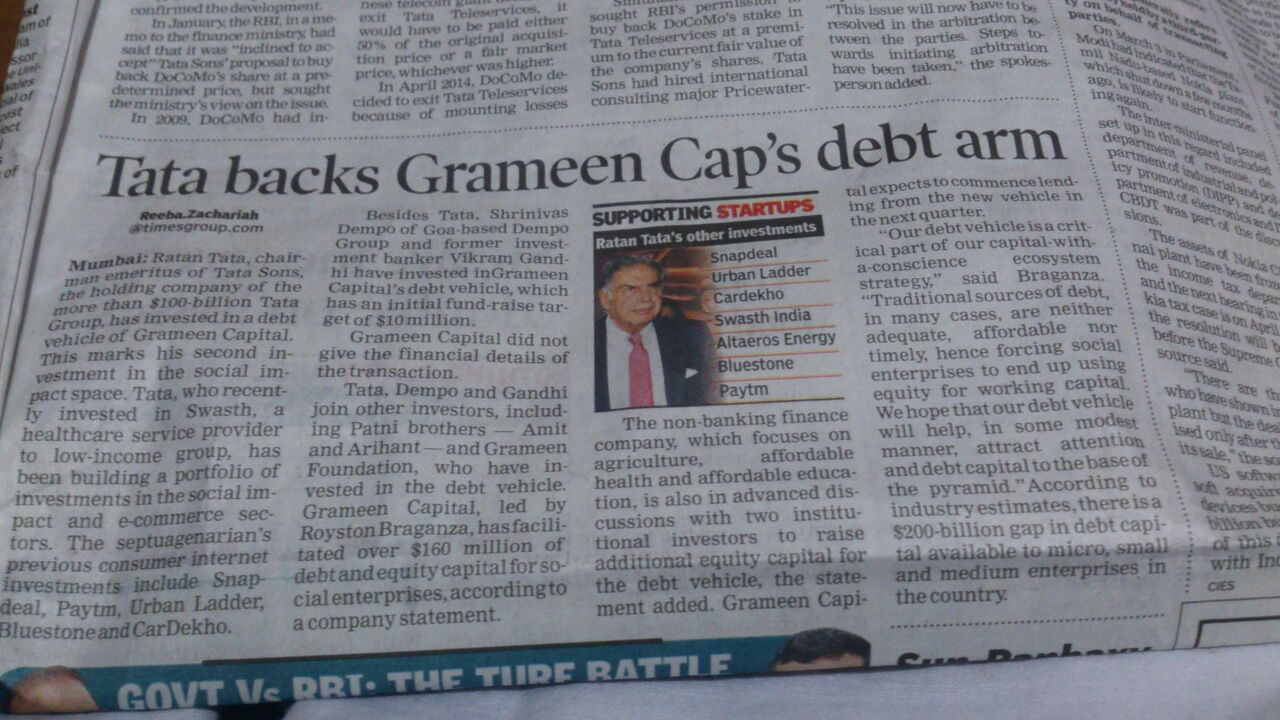

NEW DELHI- Mar 25, 2015: In a landmark verdict, the Supreme Court on Tuesday fortified the right to freedom of speech and liberty by striking down as 'unconstitutional' Section 66A of Information Technology Act, which police had used indiscriminately to arrest persons for posting criticism of government and political leaders.
Justices J Chelameswar and RF Nariman said the law was ambiguously worded, prone to misuse and, therefore, stretches far beyond the "reasonable restrictions" criterion laid down under Article 19( 2) of the Constitution. They brushed aside the government's promise not to misuse the law saying that what is unconstitutional should not be on the statute book at all.
As a result of the verdict, which brings the law in line with the times where internet-based social media is used by citizens to air their views freely, all cases slapped till date against citizens under Section 66A of the Act will be closed and police cannot arrest anyone under this section in future. However, the cases may continue if the police had invoked other sections of IPC along with 66A against the arrested person.
In fact, despite the SC judgment, citizens still need to be careful in posting comments in websites and social network sites as provisions similar to Section 66A exist in Indian Penal Code's Sections 153 and 505.
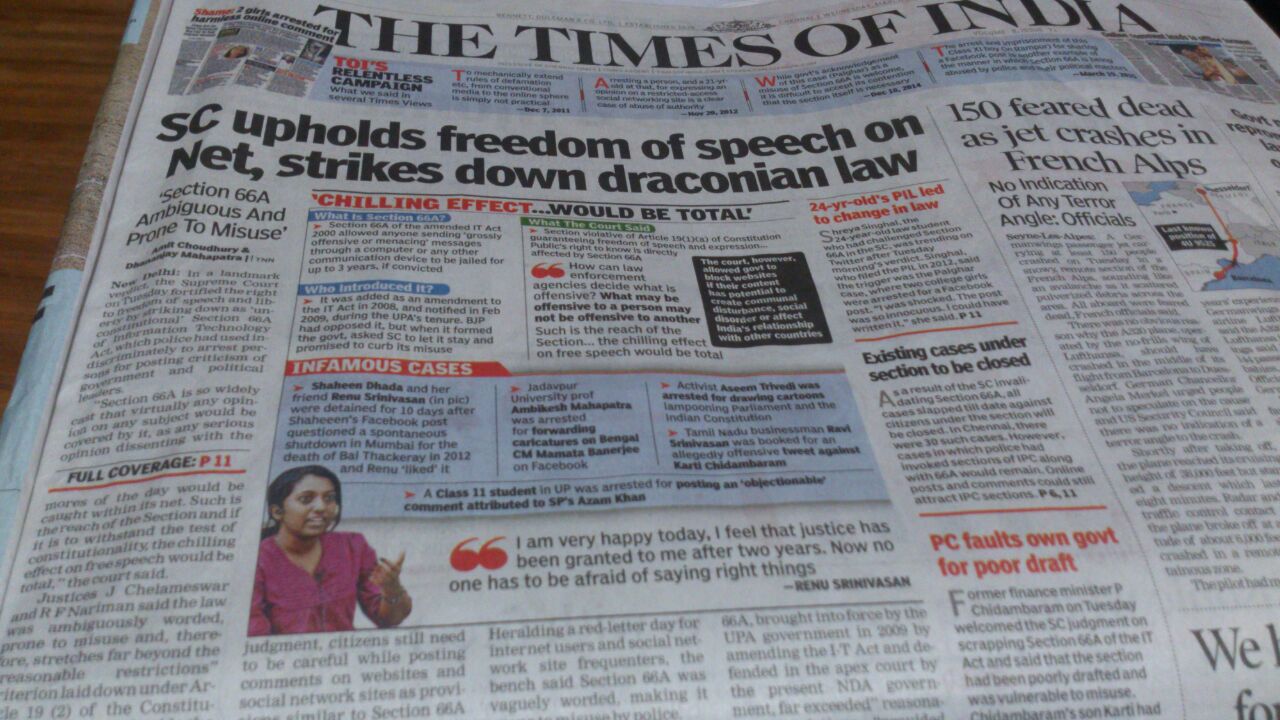

Dividends in mutual fund (MF) schemes are getting bigger. The strong rally in markets has prompted fund houses to offer higher payouts for investors - as high as 85% - with even balanced funds that invest a portion of their corpus in fixed income giving payouts.
Equity-linked savings schemes (ELSSs) have been the most prolific in offering dividends as they compete to garner funds from investors who rush to buy tax-saver instruments just before the close of the financial year to lower their tax burden. As many as ten ELSSs, or tax-saver equity MFs, have declared dividends since early March.
Religare Invesco's Growth Fund has declared a dividend of Rs 8.5 per unit, or 85%, the highest for the 27-month-old fund. HDFC Taxsaver Fund has offered a dividend of Rs 7 per unit, the highest since 2008. SBI Magnum Taxgain Fund has given a similar payout, which is also the highest in seven years. These funds have gained 50.4-53.2% in the last one year.

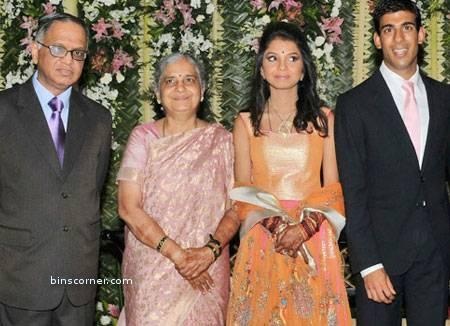
LONDON 22-mar-2015: Infosys co-founder Narayana Murthy's son-in-law is leading the list of ethnic minority MPs expected to win seats for the Conservative party in the May 7 General Election in the UK.
The UK-based Rishi Sunak will contest from former foreign secretary William Hague's constituency of Richmond in North Yorkshire.
The Oxford University and Stanford MBA graduate, who co-founded a 1-billion pound global investment firm and specialised in investing in small British businesses, is expected to make the "class of 2015" as the most high profile new Indian-origin MP.
